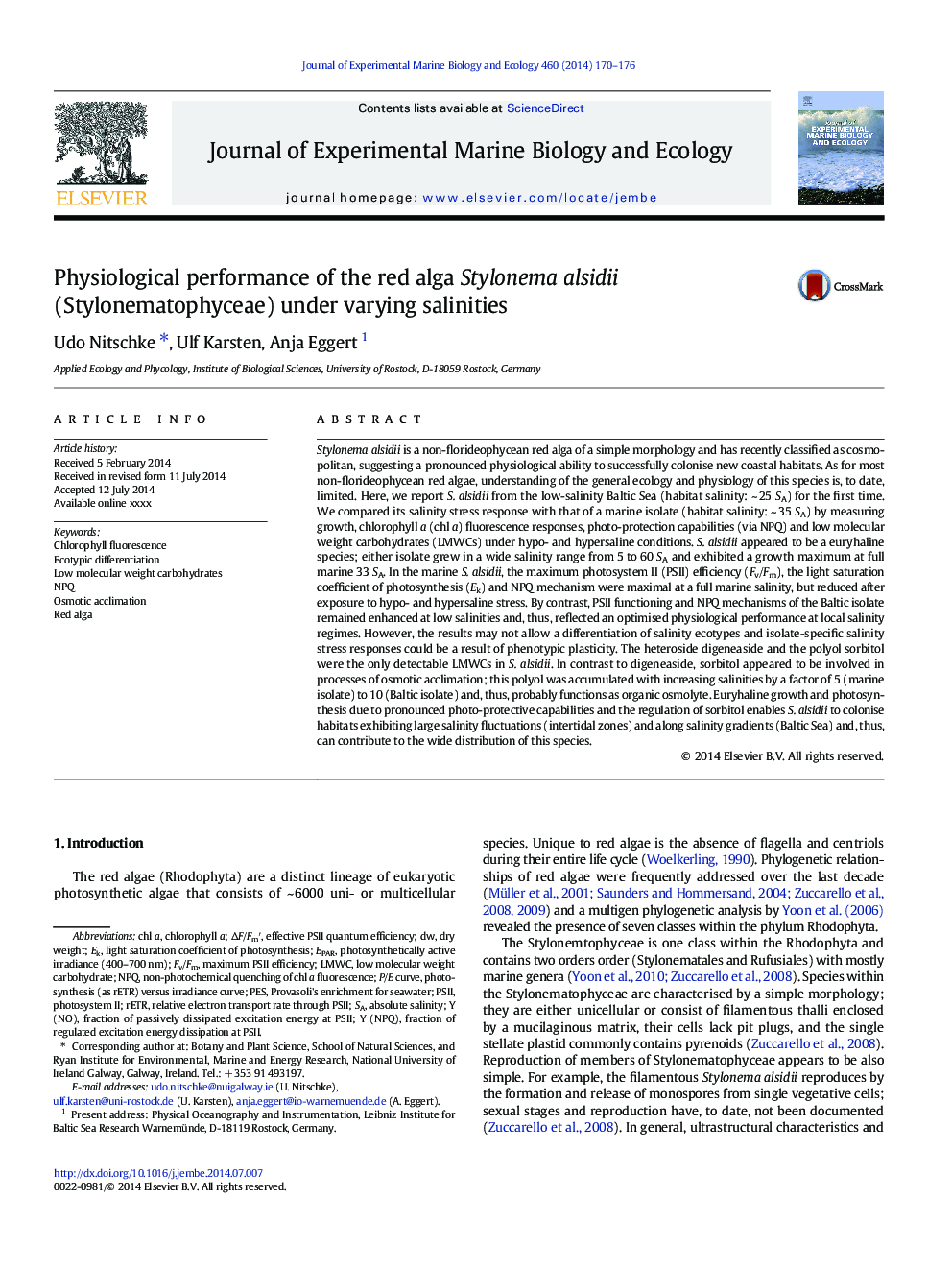| Article ID | Journal | Published Year | Pages | File Type |
|---|---|---|---|---|
| 6304082 | Journal of Experimental Marine Biology and Ecology | 2014 | 7 Pages |
Abstract
Stylonema alsidii is a non-florideophycean red alga of a simple morphology and has recently classified as cosmopolitan, suggesting a pronounced physiological ability to successfully colonise new coastal habitats. As for most non-florideophycean red algae, understanding of the general ecology and physiology of this species is, to date, limited. Here, we report S. alsidii from the low-salinity Baltic Sea (habitat salinity: ~Â 25Â SA) for the first time. We compared its salinity stress response with that of a marine isolate (habitat salinity: ~Â 35Â SA) by measuring growth, chlorophyll a (chl a) fluorescence responses, photo-protection capabilities (via NPQ) and low molecular weight carbohydrates (LMWCs) under hypo- and hypersaline conditions. S. alsidii appeared to be a euryhaline species; either isolate grew in a wide salinity range from 5 to 60Â SA and exhibited a growth maximum at full marine 33Â SA. In the marine S. alsidii, the maximum photosystem II (PSII) efficiency (Fv/Fm), the light saturation coefficient of photosynthesis (Ek) and NPQ mechanism were maximal at a full marine salinity, but reduced after exposure to hypo- and hypersaline stress. By contrast, PSII functioning and NPQ mechanisms of the Baltic isolate remained enhanced at low salinities and, thus, reflected an optimised physiological performance at local salinity regimes. However, the results may not allow a differentiation of salinity ecotypes and isolate-specific salinity stress responses could be a result of phenotypic plasticity. The heteroside digeneaside and the polyol sorbitol were the only detectable LMWCs in S. alsidii. In contrast to digeneaside, sorbitol appeared to be involved in processes of osmotic acclimation; this polyol was accumulated with increasing salinities by a factor of 5 (marine isolate) to 10 (Baltic isolate) and, thus, probably functions as organic osmolyte. Euryhaline growth and photosynthesis due to pronounced photo-protective capabilities and the regulation of sorbitol enables S. alsidii to colonise habitats exhibiting large salinity fluctuations (intertidal zones) and along salinity gradients (Baltic Sea) and, thus, can contribute to the wide distribution of this species.
Keywords
Related Topics
Life Sciences
Agricultural and Biological Sciences
Aquatic Science
Authors
Udo Nitschke, Ulf Karsten, Anja Eggert,
